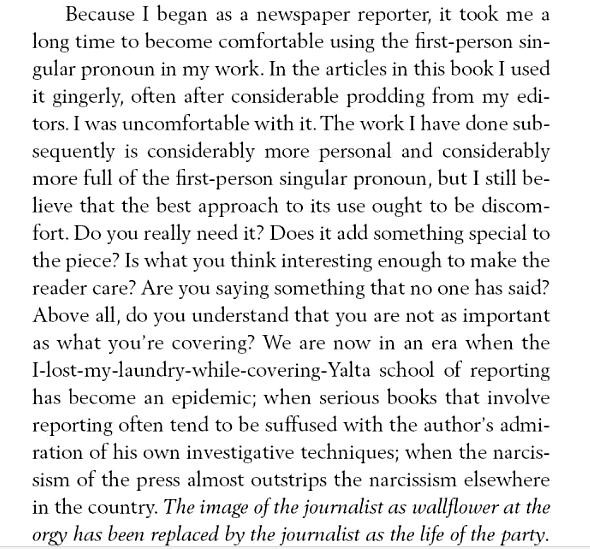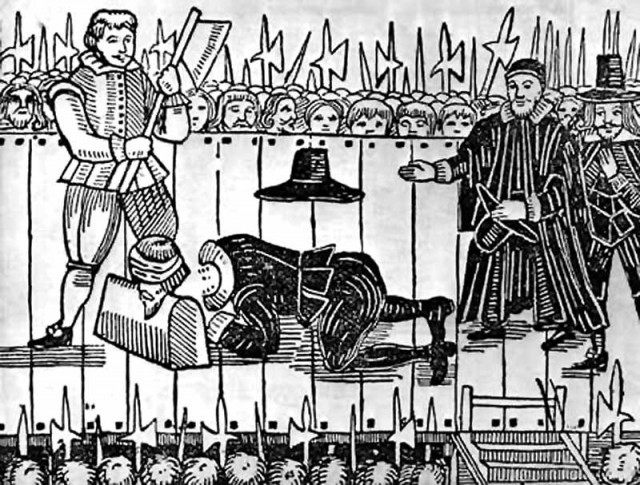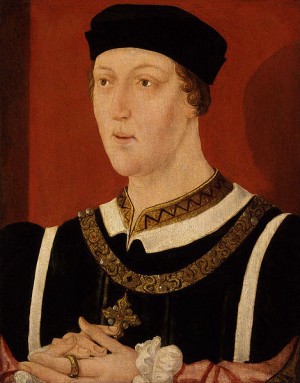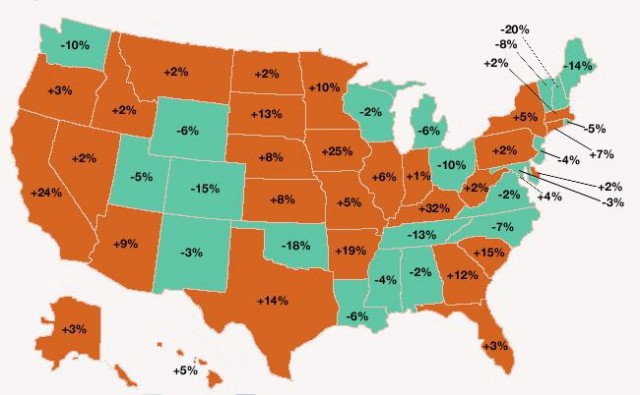I Have Confidence In Jennifer Egan
“Owner is confident enough to display pop fiction, and likely reads it, too.”
— This is what putting Jennifer Egan’s A Visit From the Goon Squad
out for your guests to notice says about you.
Pok Pok Redeemed
“As I kept dunking, my perspective underwent a Copernican shift. The sausage had seemed to be the center of the universe, but it turned out that it, and everything else on the plate, revolved around that mesmerizing naam phrik nuum. Though this sausage, a favorite in the Thai city of Chiang Mai, needed nothing more than a cold beer, I began dunking it into that chile paste. And then I’d dunk the Frito-size curls of fried pork rinds, and wedges of steamed kabocha squash, and long beans tied into knots. The paste, called naam phrik nuum, was hot but not chokingly so, and had some of the grassy sweetness of a grilled green bell pepper, and one quality that green bell peppers don’t have: I couldn’t get enough of it. Altered perceptions come free with the price of dinner at Pok Pok Ny.”
— Times dining critic Pete Wells gives Brooklyn’s Pok Pok two stars. Apparently, he didn’t mind the wait for a table as much as Bloomberg’s Ryan Sutton did. But it does seem like maybe he had some time to kill before the mushrooms kicked in.
Lana Del Rey, "National Anthem"
Huh. Just when you thought all the controversy surrounding Lana Del Rey might be dying down, turns out she was involved in the Kennedy assassination.
Skinny Mice Are Cooler Mice
“Researchers looking at a set of neurons in the part of the brain that controls hunger have found that mice with an increased appetite for food had less interest in cocaine, while those less interested in food were more interested in cocaine and other novelty-seeking behaviors.”
Take the Night Off
Selling out last night’s parties, in a brief detourism into New York Social Diarying, with no usefulness or recommendations whatsoever. (iTunes)
Nora Ephron, 1941-2012

Apart from the various ways her artistic genius displayed itself, Nora Ephron was brilliant with people and brilliant with New York City. One small way: she was always terribly kind to kiddo reporters, reasonable in a former New York Post reporter, and as a family member to yet more reporters. No matter how stupid the story, you could email her and she’d write back — Oh hello, I’m in Greece (or Italy or on a boat or en route to Los Angeles or just plain “traveling”) but let me think about this marvelous idea and get back to you just as soon as I can, and she did. And here is something germane about that, from 1980.

Giving Bad Advice To Kings
Giving Bad Advice To Kings
by Josh Fruhlinger

Part of a two-week series on the pull of bad influences in our lives and in the culture.
1.
The highbrow way that most people know about Edward II of England is from Christopher Marlowe’s biographical play about him, or from Brecht’s stage adaptation or Derek Jarman’s film adaptation of the same; the lowbrow way is from Braveheart. Either way, the main thing you probably think you know about him is that he was gay. Leaving aside the question of how sexual desire mapped on to self-identity in the 1300s, there are certainly reasons to believe that he was attracted to men. Snide remarks crop up in many contemporary and near-contemporary documents: “Edward took too much delight in sodomy,” said the Meaux Chronicle. The counter wisdom holds that these comments were part of a smear campaign by his enemies during a time period when anti-sodomy sentiment was being harnessed as a political weapon (against the Templars, for instance). But one thing about Edward’s biography is clear: He had a series of intense attachments to men whose counsel he valued above all others, and these men weren’t the right kind of men to advise a king.
Piers Gaveston was a knight’s son who had been Edward’s friend since boyhood. When Edward, still a prince, feuded with important officials in his father’s court, Gaveston was seen as the cause, and was sent to exile. Summoning him home was Edward II’s first royal act. Gaveston was made Earl of Cornwall, but his political fights with the existing nobility would define the rest of his life, which didn’t last long. The nobility, without whose money and prestige and feudal armies Edward could not run the country, forced Gaveston into exile twice more in the next five years. He was never openly attacked for his sexuality, but instead was hated because he gave advice to the king that was no good, and the king should be taking the real nobility’s advice, anyway. In 1311 a committee of aristocrats and bishops imposed a series of Ordinances on the king, which declared that “through bad and deceitful counsel, our lord the king and all his men have everywhere been dishonoured.”

The nobles of course had good self-interested reasons for calling Gaveston’s advice bad: it was different from the advice Edward should have been getting, from them. How bad the advice actually was on some kind of objective scale isn’t as obvious. Edward’s reign was not a success. The war with Scotland that Edward had inherited from his father was going badly, and the taxes his father had imposed to fund it were starting to rankle, though how involved Gaveston was in these affairs isn’t clear. But much of royal domestic politics in medieval England centered on keeping the nobility happy, so in that respect Gaveston’s guidance went spectacularly wrong. Gaveston did serve one important role for the disgruntled nobles, though: he was someone they could be mad at who wasn’t the king. At the time of Edward’s reign, it had been more than 150 years since England had seriously tried to depose its ruler, and the idea was a hard one to broach. Better to pass laws saying that royal appointments needed to take heed of advice from Parliament so as to avoid the effects of evil counsel from certain parties, than to tell the king he was doing a bad job.
A group of nobles captured and killed Gaveston when he returned, illegally, from his final exile. Edward never forgave them for it, and his relationship with the nobility never recovered. He found a new person from whom to receive bad advice — Hugh Despenser, a dissolute young aristocrat who during one period of enforced exile was an actual pirate — and this second case of bad judgment proved one too many. He was eventually overthrown and captured by an alliance of aristocrats led by his wife. Imprisoned in Kenilworth Castle, he was read a list of charges laid against him by Parliament, among which were accusations that he allowed others to rule him to the detriment of the country, and that he failed to follow good advice. Weeping, he agreed to abdicate in favor of his teenage son. Ten months later he was dead. The most common story at the time was that he had been suffocated on the orders of his wife’s lover. The other thing that you think you know about Edward II — that he was sodomized to death with a red-hot poker — is almost certainly false, a story that didn’t become widely circulated until almost a century after his death. It seems that his enemies cared less about who Edward had sex with than about who he listened to.
2.

Henry VI was Edward II’s great-great-great grandson, and became king when he was just nine months old. This was a dodgy situation in a medieval monarchy, because even though the king was expected to listen to the good advice of his nobles, he was still ultimately responsible for deciding which advice was best and acting on it, something an infant obviously couldn’t do. But this was a problem with a time-honored solution — a regency council, headed by the king’s uncles, that would rule in Henry’s name — and a definite end date. Henry would eventually come of age and then start making his own decisions.
Not that all of those decisions went particularly well. As Henry matured to young adulthood, the course of the Hundred Years War against France went worse and worse for England. And when he hit his early 30s, a more terrifying problem revealed itself: he was mentally ill, profoundly so. In 1453, upon learning about the final defeat of English forces in France, he became mute and unresponsive for more than a year. Although he eventually recovered somewhat, after this spell he generally preferred to spend his time in seclusion and religious devotion, and suffered further bouts of near-catatonia. Whatever the modern diagnosis would have been (the smart money is on schizophrenia), a living but incompetent king was a disaster for royal government. What had already under a weak king been some rough jostling for position by various factions within the nobility degenerated into outright civil war, which has been given the somewhat overly dignified name of the War of the Roses.
The first bout of this war was fought not to seize the throne, but to control access to the king, and to give him advice. During Henry’s first period of illness, his cousin Richard of York was appointed Lord Protector and effective ruler of the country; when Henry recovered well enough to speak, his wife Margaret convinced him to put her in charge. Richard, who had his own genealogical claim to the throne, raised an army to fight against Margaret and the court. His initial stated aim? To replace the king’s poor advisors. Of course.
The war that followed played out as a grisly contest for custody of the king. If you had control of the mentally incompetent monarch, it was the easiest thing in the world to claim that he was reigning in accordance with your advice. The Yorkists won a shock victory in the conflict’s first pitched battle in 1455; they found the king sitting quietly alone in his tent, abandoned by his servants and hangers on. Richard was once again appointed Lord Protector. A year later, Henry recovered just enough to fire Richard and put his wife back in charge; together, husband and wife toured the Midlands, where they were popular, going from town to town in an elaborate royal procession while Margaret worked behind the scenes to try to displace Richard’s appointments. Meanwhile, the rest of the country went to pieces. In 1460, the Yorkists won another battle, and again found Henry alone in his tent. Richard thought this was his chance to seize the throne, but too many of his supporters had taken him at his word that his only goal was to get rid of Henry’s evil counselors; all Richard could do was convince Parliament to disinherit Henry’s son and make Richard heir.
The farce continued. In 1461, an army loyal to Margaret defeated the Yorkists and killed Richard; the victors found Henry sitting under a tree, singing softly to himself. Nevertheless, the Yorkists managed to seize control of most of the country, and the assembled nobles in London finally declared Henry deposed and Richard’s son Edward king. Henry was captured again, in 1465, and locked away in the Tower of London; five years later, in a final horrific chapter, a disgruntled duke seized control of London, declared Henry king again, and paraded him through the streets of the capital. One can only imagine what five years of imprisonment in a dank castle and separation from anyone who loved him must have done to Henry’s mental state, but he was, by this time, only important as a physical presence, a figurehead who could be displayed to the people. The whole episode was something of a farce; all the conspirators could find for a royal regalia for Henry was a tatty blue robe, which chroniclers deemed pathetic. By the following May, King Edward had come back and Henry had been murdered. It may have been something of a blessing.
3.

Charles I of England had the misfortune of being king at a time when feudalism was well and truly dead and government was becoming professionalized, which meant that it took real money to run. This was a misfortune because the traditional ways the king got money to run his government — duties on imports and revenues from the royal estates — had essentially been maxed out, with the only way to raise new funds being taxes, and the only way to raise taxes being to ask Parliament. Parliament wasn’t so powerful when you didn’t need taxes, but when you were short of cash you had to listen to its advice.
Charles managed to go eleven years without summoning Parliament, but when a religious revolt broke out in Scotland (a country that Charles was also king of) in 1639, he finally gave in. Unfortunately for Charles, the Parliament that was elected (elections were starting to happen in England, restricted though the voter list might have been) was full of the same sort of Protestant ultras that he was opposed to in Scotland. This body passed a series of resolutions that managed to adamantly oppose Charles’ policies while swearing loyalty to him. This paradoxical bit of doublethink was pulled off by invoking the specter of evil advisors who had to be stopped. The Protestation averred that the government was being subverted by “most pernicious and wicked counsels, plot, and conspiracies,” and included an oath of “allegiance to His Majesty’s royal person.” The Grand Remonstrance contrasted the “dutiful and loyal counsels and endeavours of your Parliament” with the conspiracy of Jesuits and other unnamed evil counselors who were dragging the unwitting king into popery, and England with it.
It was a fairly transparent ploy. The king had certainly had counselors, and they were certainly hated, but in contrast with Edward II and Henry VI, nobody doubted that Charles was the author of the policies everyone despised. Ultimately, he was following nobody’s advice but his own, which made the fiction untenable. Nevertheless, Parliament continued to protest their loyalty to the king even after they raised an army against him, waged five years of extremely bloody war against him, won and then held him prisoner. If only he would listen to their advice on how things should be run! It was such good advice. Eventually, the army that had done Parliament’s bidding took matters into its own hands, deposed the moderates in a coup, and established a military dictatorship that put Charles on trial. Charles was found guilty of “wicked designs, wars, and evil practices [that] have been, and are carried on for the advancement and upholding of a personal interest of will, power, and pretended prerogative to himself and his family.” There are no evil counselors on that list. The pretense was brushed aside and he was duly executed.
4.
The theocratic republic founded in Charles’ wake barely lasted a decade, and the royal family was invited back in 1660. They made one last go at running things on their own — James II tried bringing Catholicism back against Parliament’s wishes and counter to the prevailing mood in the country. The king’s son-in-law, arriving from Holland with an army, declared that “to our great regret, we see that those counsellors, who have now the chief credit with the King, have overturned the religion, laws, and liberties of these realms.” To his credit, James knew what this kind of talk meant, and he got out of town before he could end up dead.
Through a quirk of genealogy, the English soon found themselves with a new royal family, a pack of Germans who spoke little English and didn’t know or much care about England. They were perfect. They knew how to take advice and, with the bitter rivalries within the ruling class now being funneled into electoral politics, it was more readily obvious from whom they should take it. One of their descendents just celebrated 60 years on the throne. In an intriguing bit of linguistic gymnastics, the very word “advice” has come, in British legal theory, to mean an absolutely binding command to a monarch from an elected official on how the monarch is to perform his or her duties. You could look at this as a victory for the advisors, but since the chances of Queen Elizabeth being killed by her jealous lords or outraged subjects is essentially nil, she seems to have come out okay in the deal, considering the alternatives.
Once the British had perfected this system of telling their ruler what to do and how to do it, they seemed puzzled that anyone else might have a problem with doing the same. In 1789, a group of angry, hungry Parisians marched to the palace of Versailles, determined that their king should be wrenched away from the aristocratic clique that was keeping him from understanding the people’s needs. They took him back to Paris, and matters worked themselves out as you might expect. British public opinion was horrified. It was if they had forgotten that they ever murdered kings.
Previously in series: Bad News Brenda, Drunk In China, The Writer With The Pink Velvet Pants, A Little History Of Blackmail and Drinking While Pregnant
Josh Fruhlinger promises that the next thing he writes will not be about how monarchs die. He advises you to follow him on Twitter or Tumblr.
What Does A Pack Of Cigarettes Cost In Each State Now?
by Nic Turiciano

This information has been updated as of August, 2014. Click here!
Last summer, we checked the price of cigarettes state by state and in D.C. Here’s how prices have increased and decreased since then.
51. West Virginia (last year $4.74): $4.84 = +2%
50. New Hampshire ($5.87): $4.86 = -20%
49. Tennessee ($5.56): $4.91 = -13%
48. North Dakota ($4.91): $5.03 = +2%
47. Idaho ($4.99): $5.11 +2%
46. North Carolina ($5.51): $5.14 = -7%
45. Alabama ($5.27): $5.18 = -2%
44. Colorado ($5.96): $5.19 = -15%
43. Wyoming ($5.50): $5.21 = -6%
42. Oklahoma ($6.19): $5.24 = -18%
41. Virginia ($5.55): $5.43 = -2%
40. Mississippi ($5.75): $5.55 = -4%
39. Indiana ($5.50): $5.56 = +1%
38. Ohio ($6.22): $5.67 -10%
37. Oregon ($5.59): $5.74 +3%
36. Missouri ($5.58): $5.87 +5%
35. Georgia ($5.29): $5.93 = +12%
34. Minnesota ($6.53): $5.96 = +10%
33. Nebraska ($5.55): $5.99 = +8%
32. Nevada ($5.93): $6.04 = +2%
31. Delaware ($6.00): $6.10 = +2%
30. Montana ($5.99): $6.12 = +2%
29. South Carolina ($5.42): $6.25 = +15%
28. Florida ($6.08): $6.29 = +3%
27. California ($5.19): $6.45 = +24%
26. Kansas ($6.00): $6.47 = + 8%
25–24. Louisiana($4.82), Michigan ($6.90): $6.50 = +35%, -6%
23. Maryland ($6.70): $6.53 = -3%
22. Kentucky ($4.97): $6.56 = +32%
21. New Mexico ($6.88): $6.69 = -3%
20. South Dakota ($6.03): $6.82 = +13%
19. Utah ($7.22): $6.88 = -5%
18. Texas ($6.07) $6.89 = +14%
17. Pennsylvania ($6.80): $6.93 = +2%
16. Maine ($7.97): $6.97 = -14%
15. Arkansas ($5.96): $7.10 = +19%
14. Arizona ($6.87): $7.46 = +9%
13. Iowa ($6.00): $7.52 = +25 %
12. Vermont ($8.23) $7.60 = -8%
11. Wisconsin ($8.11): $7.98 = -2%
10. New Jersey ($8.35): $8.00 = -4%
9. Rhode Island ($8.60): $8.16 = -5%
8. Washington D.C. ($7.99): $8.27 = +4%
7. Massachusetts ($8.30): $8.49 = +2%
6. Connecticut ($8.25): $8.85 = +7%
5. Washington ($9.89): $8.98 = -10%
4. Alaska ($9.14): $9.39 = +3% *
3. Hawaii ($9.73) = +5%
2. Illinois ($9.67): $10.25 = +6%
1. New York ($11.90): $12.50 = +5%
Methodology: As we did last year: a gas station was rung up in the most populous city in every state and asked for the price of a pack of Marlboro Reds with tax. All told, 84 separate numbers were dialed. Six stations refused to give cigarette prices over the phone as per store policy. Three clerks in New Mexico refused to believe that I was at least 18 years old and so wouldn’t give me cigarette prices (not sure whether it’s a legal issue or they didn’t like my tone). One clerk in Massachusetts cursed at me, apparently under the impression I was a competitor trying to undercut his business.
* Editor’s note: The final four states on the list were reordered (and the graphic above corrected) after publication to adjust for Illinois’ recent tax increase.
Nic Turiciano is an Awl summer reporter. You can follow him on Twitter. Thumbnail photo by melloveschallah.
Old People Snatching Up The Few Things They Don't Already Have
“Baby Boomers are starting companies at a faster pace than ever before, according to a March report by the Kauffman Foundation and younger workers lack the disposable income and job prospects they once had. This means we may be witnessing a passing of the innovation baton to members of the older generation. As older Americans begin to define the debate around innovation, then the generation gap will soon make its presence felt in innovation hubs like Silicon Valley.”
Move In, Do Sex, Move On
“Quickly moving in with your honey may be the kiss of death for some couples. New research indicates that couples who move in together before they get engaged or married are less happy and less likely to stay together than couples who wait…. The responses showed that the couples’ frequency of sex increased for a short time after they moved in together, but the responses also showed overall declines in relationship quality and commitment.” So… trade-offs.
